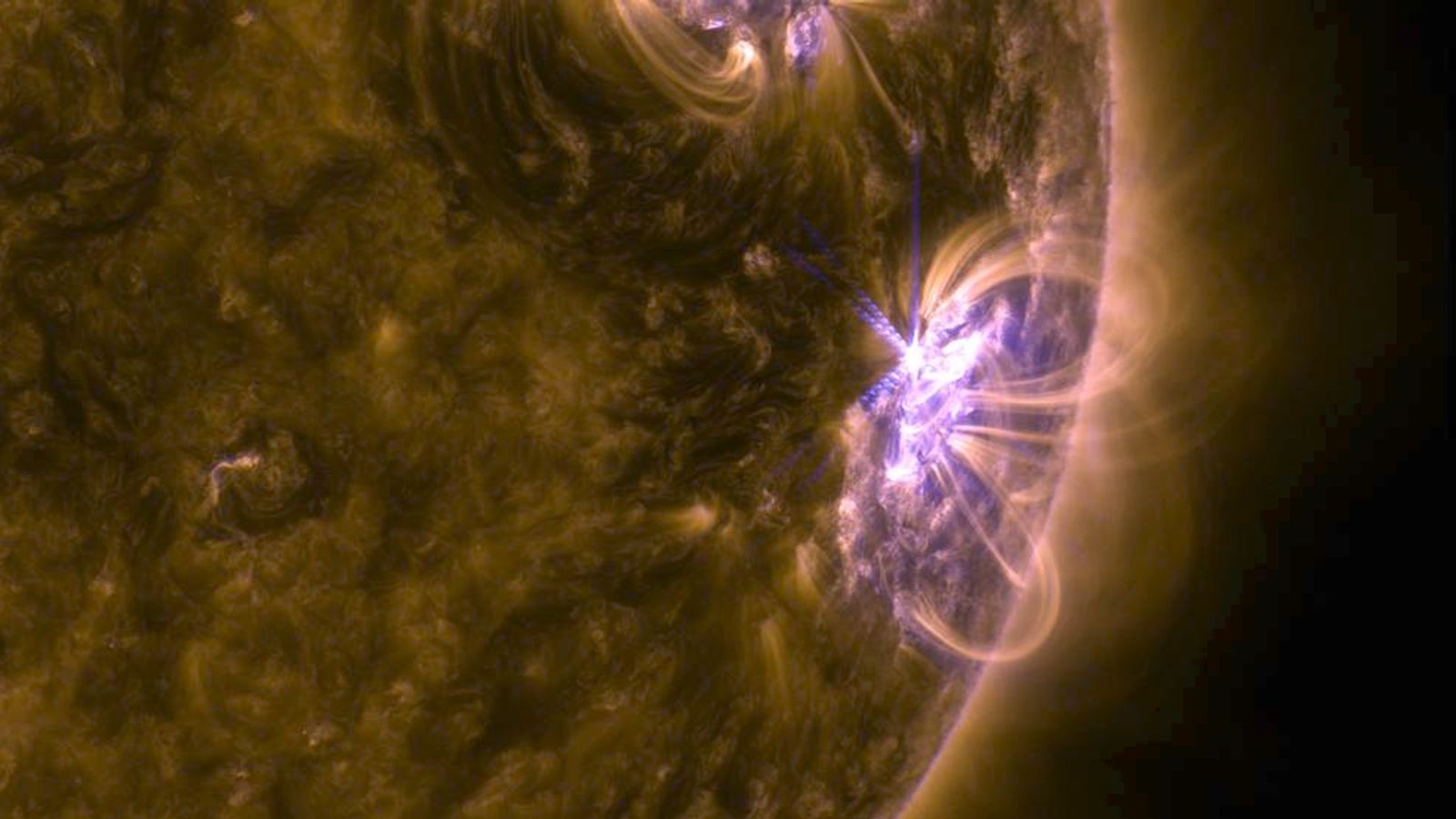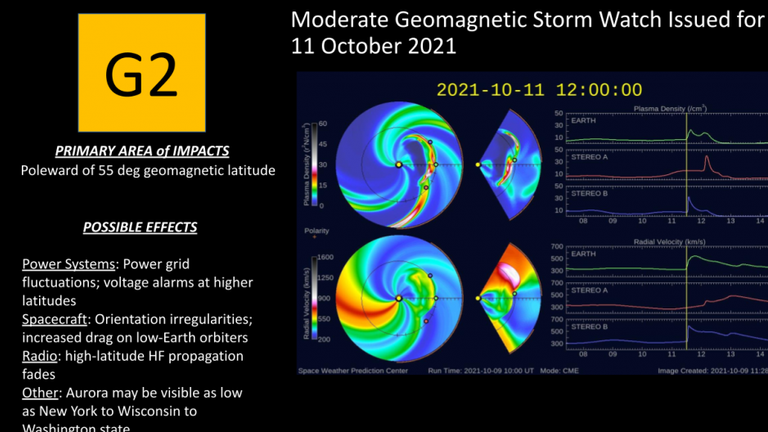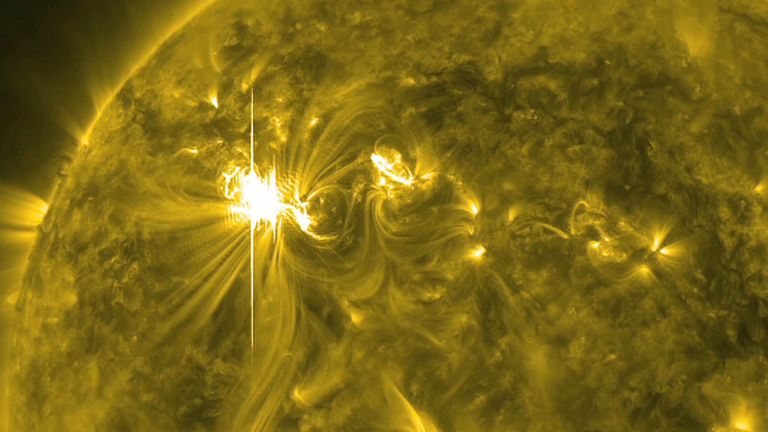A massive solar flare is due to hit Earth today, authorities are warning – potentially disrupting power grids and bringing the Northern Lights as far south as New York.
The flare – officially known as a coronal mass ejection (CME) – was observed on Saturday on the side of the sun directly facing our planet and comes as we enter a period of increased solar activity.
An alert was published by the US National Oceanic and Atmospheric Administration (NOAA) which warned the geomagnetic storm could cause power grid fluctuations with voltage alarms at higher latitudes, where the Earth is more exposed.
NOAA added that satellites may be impacted too and could exhibit “orientation irregularities” meaning ground control would have to redirect them, as well as anything in low-Earth orbit experiencing increased drag.
The geomagnetic storm could reach category G2, which is moderately strong according to the agency.
“Event analysis and model output suggest CME arrival around midday on 11 Oct, with lingering effects persisting into 12 Oct,” it added, with midday in the US meaning late afternoon and early evening in the UK.
The Met Office said: “Aurora is possible through [the] 11th across much of Scotland, although cloud amounts are increasing, meaning sightings are unlikely.
“There is a slight chance of aurora reaching the far north of England and Northern Ireland tonight, but cloud breaks and therefore sightings are more likely in Northern Ireland,” it added.
But astronomers do not expect the flare to cause major disruption as per the Carrington Event, believed to be the largest solar storm ever recorded, which hit Earth in 1859.
The Carrington Event left an aurora visible across the sky, even in latitudes much closer to the equator, and was described in contemporary reports as even brighter than the light of a full moon.
It caused the failure of telegraph systems all across Europe and North America, and a similar storm today could cause trillions of dollars in damage globally.
Solar activity has been observed rising and falling naturally every 11 years, although not quite like clockwork, and astronomers believe we are now in the early years of a new busy period.
A new family of sunspots, discovered on the surface of our star last year, unleashed the biggest solar flare that scientists have seen since 2017.
There are a number of classes of solar flares, with X-class being considered the most intense. Saturday’s CME was a M-class event, the second strongest behind X.
It is known as a “Halo CME”, as flares that are heading directly for Earth can be observed as a halo around the sun.


